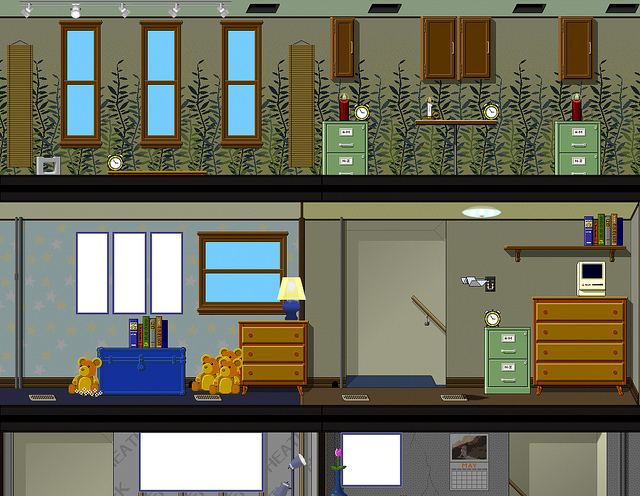Designer(s) John Calhoun Initial release date 1 September 1994 | Publisher Casady & Greene | |
 | ||
Platform Macintosh operating systems Similar Casady & Greene games, Puzzle video games | ||
Glider is a Macintosh game written by John Calhoun and first published as shareware in 1989 under the company name Soft Dorothy Software. In 1994 an enhanced version was published commercially as Glider PRO by Casady & Greene. When Casady & Greene went bankrupt in 2003, the rights to the series reverted to the author, who opted for a period of time to give the game away on his website.
Contents
The object of the game is to fly a paper plane through the rooms of a house. Air currents from heat ducts and fans affect the plane's movement, while assorted household objects are usually deadly. Some rooms have special mechanics, such as the ability to slide along grease-covered surfaces. Each room is presented as a two-dimensional side view.
Calhoun wrote several other Macintosh games, but Glider was the most popular.
Gameplay
The main challenge is to simply avoid collision with the floor, or obstacles such as furniture. Moving obstacles include bouncing basketballs, popping toast, and dripping water. Candles and other ablaze objects sport both a handy updraft and a lethal flame. Collision with "enemy" paper planes and balloons is also fatal, but these can be shot down with the use of a rubber bands bonus item. The other bonus items are aluminum foil (shielding against in-flight collisions), pieces of paper (extra lives), a variety of clocks (points) and batteries and helium tanks (mutually exclusive, granting the ability for faster or more buoyant flight, respectively).
A puzzle element is added to the gameplay in the form of switches controlling vents, lighting, home applications and even enemies.
Glider PRO adds such things as sunny weather, the start of summer vacation, and outdoor environments in addition to indoor environments.
Houses
Levels are called "houses" in Glider parlance, though a level may contain any number of individual buildings, as well as outdoors, sewer, or other sections. Houses are entirely self-contained, and any of them is immediately available for play. The game was released with one real house called Slumberland, and one demonstration house. A later CD release of the game featured 14 further houses. Beyond this, a sizable number of houses are available for download on fan sites.
Houses can be created using the built-in house editor in the "Classic" version.
Reception
Inside Mac Games praised the game for its entertaining and non-violent gameplay, in addition to having a two-player mode that did not require modems or a network.
Legacy
Two monthly ezines, GliderTech and The Cockpit were published between 1995 and 1997 during Glider PRO's heyday. GliderTech published editorials, house reviews, house building tips and each issue was accompanied by a house or two with some examples of obstacles or techniques that could be used in house creation.
In 2006, Mark Arenz teamed up with Calhoun to construct a version of Glider PRO built in Adobe Flash.
On 20 June 2014, a version of Glider for OS X 10.7 or later, was released on the Mac App Store. This version is also available for the iPhone and iPad as Glider Classic. Both are from Soft Dorothy LLC.
On 27 Jan 2016, the source code, graphics, and sound data for Glider PRO were released on GitHub with the source code being licensed under the GNU General Public License v2.
